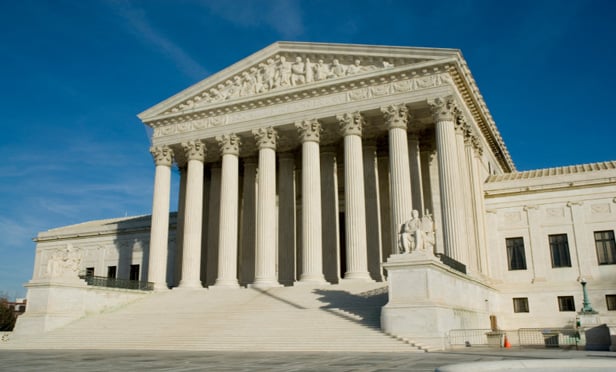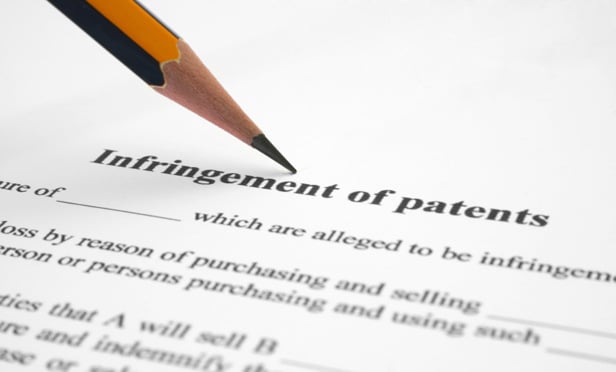Features

Supreme Court, Federal Circuit Deny Damages for Patent Found to Be Valid and Infringed
On Nov. 13, 2017, a Federal Circuit panel of Chief Judge Prost, Judge Mayer, and Judge Chen issued a unanimous decision in <i>Promega Corp. v. Life Technologies Corp.</i> On remand from the United States Supreme Court, the panel affirmed a grant of judgment as a matter of law by the United States District Court for the Western District of Wisconsin that the plaintiff failed to prove its infringement case under §§35 U.S.C. 271(a) and 271(f)(1). The panel affirmed the district court's denial for a new trial on damages and infringement, and reaffirmed its prior holdings on enablement, licensing, and active inducement issues.
Features

Labor and Employment Law Changes in the Trump Era
President Trump's first 11 months in office brought significant changes to labor and employment law. Immediate changes to the leadership and agendas for the DOL, the EEOC and the NLRB) have already occurred, along with reversals of policy and positions taken in court.
Features

Fantasy Sports Dispute Results In New Views On Exceptions to Rights of Publicity
In a case of first impression, the U.S. District Court for the Southern District of Indiana has decided that the newsworthiness and public interest exceptions to Indiana's right-of-publicity statute do apply to online fantasy sports companies that use college athletes' names and likenesses.
Features

What Lies Beneath the Surface: The Dark Web
Nearly all of us access the World Wide Web on at least a daily basis. Yet for many of us, there is a fundamental lack of knowledge about the basic structure of the Internet and the way its different levels interact. This article provides a basic outline of the structure of the Web and some insight as to the purpose for and content housed on each level, as well as give some practical tips to avoid your company's data from ending up on the Dark Web.
Features

Wave of Sexual Misconduct Claims Warrants Looks at Confidentiality, Nondisclosure Agreements
Companies try to protect their reputations from executives who have "gone wild" by including moral turpitude clauses as a basis to terminate executives for cause under their employment agreements. Similarly, in the context of employment disputes, companies try to protect themselves through the use of non-disclosure, non-disparagement and confidentiality provisions in settlement agreements.
Features

Key Decisions from Delaware Courts
<b><i>Mergers and Acquisitions</i></b><p>A few recent decisions from the Delaware Court of Chancery provide useful information to corporate executives who are involved in the sale or purchase of businesses, or who are involved in joint ventures in which the sales price or the post-closing profit distribution is based on certain milestones being reached.
Features

Decision of Note<br><i>Empire</i> TV Show Doesn't Infringe Hip-Hop Label Trademark
The U.S. Court of Appeals for the Ninth Circuit decided that the Fox TV show <i>Empire</i> didn't violate federal Lanham Act or California trademark rights of the urban music record label Empire Distribution.
Features

To Train or Not to Train: That Is the Question
How to determine whether a performance discrepancy is serious enough to warrant action, and how training solutions should then be explored.
Features

Written Opinions Of Counsel: Valuable Tools for Avoiding Willful Patent Infringement
Written opinions of counsel are gaining renewed interest as a valuable tool to limit liability for willful patent infringement. A patent opinion that is competently written by a registered patent attorney sets forth the factual and legal basis for finding a patent not infringed, invalid, and/or unenforceable. However, to be effective, the timing of the rendered patent opinion may be critical.
Features

When Terms of Use Put 'Reasonably Prudent User' on Notice
On Aug. 17, 2017, the Second Circuit issued its decision in <i>Meyer v. Uber Technologies, Inc.</i>. The appeals court vacated and remanded the trial court ruling by holding that the registration process for Uber Technologies, Inc.'s mobile application formed a legal contract, Less than a month later, the Southern District relied on the <i>Meyer</i> decision in granting the defendant's motion to compel arbitration based on the fact that the design and functionality of defendant's amended terms of use placed plaintiffs' on "reasonably conspicuous notice" of the mandatory arbitration and jury trial waiver provisions.
Need Help?
- Prefer an IP authenticated environment? Request a transition or call 800-756-8993.
- Need other assistance? email Customer Service or call 1-877-256-2472.
MOST POPULAR STORIES
- Removing Restrictive Covenants In New YorkIn Rockwell v. Despart, the New York Supreme Court, Third Department, recently revisited a recurring question: When may a landowner seek judicial removal of a covenant restricting use of her land?Read More ›
- Bankruptcy Sales: Finding a Diamond In the RoughThere is no efficient market for the sale of bankruptcy assets. Inefficient markets yield a transactional drag, potentially dampening the ability of debtors and trustees to maximize value for creditors. This article identifies ways in which investors may more easily discover bankruptcy asset sales.Read More ›
- The Brave New World of Cybersecurity Due Diligence in Mergers and Acquisitions: Pitfalls and OpportunitiesLike poorly-behaved school children, new technologies and intellectual property (IP) are increasingly disrupting the M&A establishment. Cybersecurity has become the latest disruptive newcomer to the M&A party.Read More ›
- A Lawyer's System for Active ReadingActive reading comprises many daily tasks lawyers engage in, including highlighting, annotating, note taking, comparing and searching texts. It demands more than flipping or turning pages.Read More ›
- Digital Dibs: Rival Views of Generative AI CopyrightsGAI platforms like ChatGPT and OpenAI often require very little human input, shattering this legal landscape's framework by posing a simple question: Who authored the material? We'll explore how two countries are answering this question in different ways.Read More ›
